The amount of kinesthetic awareness required in swimming makes it one of the toughest sports to pick up, and adding strength workouts to your training regimen can pay serious dividends.
"It's all about proprioception, which is a fancy word for stability," says Mitchell Reiss, a USA Triathlon certified coach in Berkeley, California. "You need core strength, upper-body strength, good body awareness, and the ability to utilize your pelvis and core to sync with the arms and the legs."
Here are seven exercises Reiss recommends for swimmers looking to improve:
Crunches With Physio Ball Part 1
1 of 14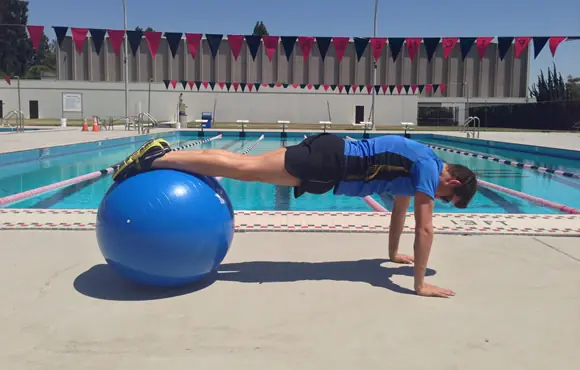
Works: core and shoulder stability, hip flexor strength, and coordination.
Start with your shins on the physio ball and your hands on the ground in the push-up position.
Crunches With Physio Ball Part 2
2 of 14
Bring your knees forward and elevate your hips while rolling onto your toes, then return to the starting point. Repeat for 2 to 3 sets of 10.
Pikes With Physio Ball Part 1
3 of 14
Works: core and shoulder stability, hip flexor strength, and coordination.
Start with your shins on the physio ball and your hands on the ground in the pushup position.
Pikes With Physio Ball Part 2
4 of 14
Elevate your hips, while keeping your knees locked out. Return to the starting point. Repeat for 2 to 3 sets of 10.
Dead Bug With Physio Ball Part 1
5 of 14
Works: coordination between the arms and the legs and improves core strength.
Start off by balancing the physio ball in between your hands and shins. Press your spine into the ground.
Dead Bug With Physio Ball Part 2
6 of 14
Lower your left arm and right leg at the same time, then return to the starting position. Lower your right arm and left leg at the same time, then return to the starting position. During this exercise the lower legs should never touch the ground. Repeat for 3 rounds of 20 (10 on each leg).
Side Plank with Rotation Part 1
7 of 14
Works: core strength, specifically the obliques. "Strong obliques will keep your upper and lower body in sync," Reiss says.
Start off in the side plank position with one elbow on the ground, and the other pointing straight up.
Side Plank with Rotation Part 2
8 of 14
Begin the rotation by threading the top hand underneath your body. As the hand sweeps under the body the pelvis should rotate so that your hips are parallel to the ground. If the rotation is too difficult, start off just holding the side plank position. Repeat for 2 sets of 6 to 10 on each side.
Dips Part 1
9 of 14
Works: tricep strength, which leads to a stronger pull.
Start off with your hands placed firmly on an edge of a chair. Your knees should be bent at 90 degrees.
Dips Part 2
10 of 14
Bend your elbows to 90 degrees and drop your hips towards the ground. Straighten your arms bringing your body back up to the starting position. Use your legs for support, but do your best to use the triceps primarily to raise the body. For a challenge, try keeping your legs straight while performing the same upper body motion. Repeat for 3 sets of 10.
Rows Part 1
11 of 14
Works: shoulders. "Activating your scapular stabilizers will help protect you against common rotator cuff injuries," Reiss says.
Place your hands on the swimming pool ladder railings. Begin with your arms extended but not locked out.
Rows Part 2
12 of 14
Keep your core engaged and press your hips upwards. Pull your body up towards your hands. End with your elbows bent at 90 degrees. Then return to the starting position, and repeat. Repeat for 3 sets of 10.
Pull-ups
13 of 14
Works: back and shoulders.
Grab a pull-up bar with your palms facing forward. Start pulling up, and bring your torso back about 30 degrees. Pull up your torso until your chest touches the bar. Engage your lats and drop your shoulders. Allow your body to drop back down to the starting position. If you don't have the strength to do a pull up, you can use a chin assist machine or a resistance band. Repeat for 3 sets of 6 to 10.
Get ACTIVE on the Go
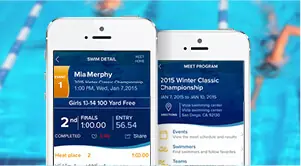

Meet Mobile
Swim smarter: heats, lane assignments and real-time results in the palm of your hand.
Available for iOS | Android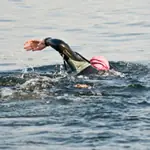
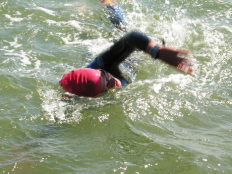
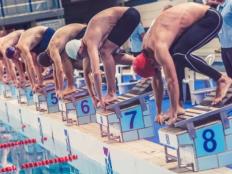
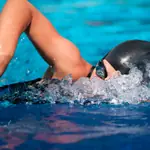


Discuss This Article